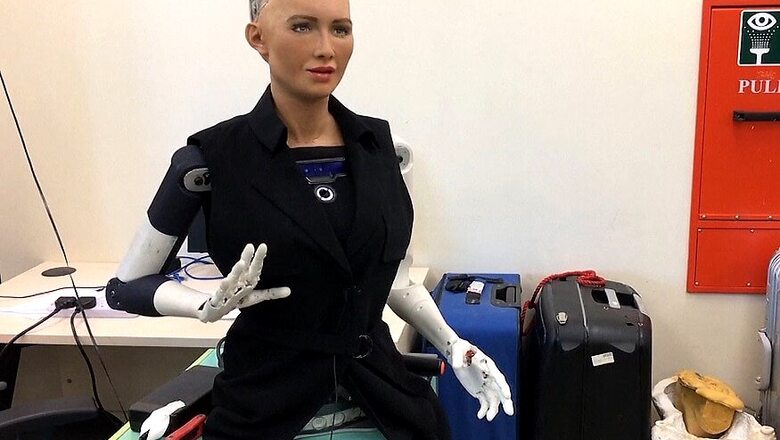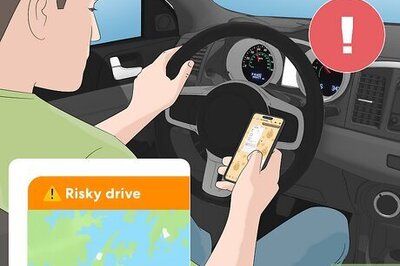
views
David Hanson envisions a future in which AI-powered robots evolve to become "super-intelligent, genius machines" that may help solve mankind's most challenging problems.
If only it were as simple as that.
The Texas-born former sculptor at Walt Disney Imagineering and his Hong Kong-based startup Hanson Robotics is combining artificial intelligence with southern China's expertise in toy design, electronics and manufacturing to craft humanoid "social robots."
They have faces designed to be so lifelike and appealing that they can earn trust from humans who interact with them.
Watch: Robot Becomes Saudi Arabia Citizen | Sophia becomes the World's First Robot Citizen
49-year-old Hanson is perhaps best known as the creator of Sophia, a talk show-going robot, partly modelled on Audrey Hepburn, that he calls his "masterpiece."
"Sophia is the most sophisticated, she is the flagship robot of Hanson Robotics. We think of her as our masterpiece and yet she's just the beginning," says Hanson.
But Sophia currently appears more like an animated mannequin, as much a product of his background in theatrics as an example of advanced technology.
Hanson Robotics has made about a dozen copies of Sophia, who - like any human - is a work in progress.
A multinational team of scientists and engineers are fine-tuning her appearance and the algorithms that enable her to smile, blink and refine her understanding and communication.
Sophia has moving 3D-printed arms and they're working on giving her legs.
Her skin is made of a nanotech material that Hanson invented and dubbed "Frubber," short for flesh-rubber, that has a flesh-like bouncy texture mimicking human skin.
Cameras in her eyes and a 3D sensor in her chest help her "see."
The processor that serves as her brain combines facial and speech recognition, natural language processing, speech synthesis and a motion control system.
She seems friendly and engaging, despite the unnatural pauses and cadence in her speech.
Sophia's predecessors include an Albert Einstein, complete with bushy moustache and white thatch of hair.
Disney's venture capital arm is an investor in Hanson. A robot based on one of the entertainment giant's characters is due to launch as soon as next year.
As Hanson's flagship robot, Sophia travels the world as an ambassador for the company.
In October, Saudi Arabia granted her citizenship at a Riyadh tech conference, a public relations stunt seemingly aimed at highlighting the country's modernisation and reform efforts.
An artist and robotics scientist, Hanson has a background in entertainment, working on animatronic theme park shows.
He spent years sculpting props and characters for Disney attractions, like Pooh's Hunny Hunt and Mermaid Lagoon, while studying film, animation and video and eventually earning a doctorate in interactive arts and technology.
Hanson says he makes his robots as human-like as possible to help alleviate fears about robots, artificial intelligence and automation.
He rejects the idea that it's better to focus on cute robo-pets or overtly machine-like robots like Star Wars' R2-D2 rather than to pursue human likenesses.
Many experts say human characteristics on robots make people uneasy - a phenomenon called the "uncanny valley," where people are unsettled by human replicas, such as wax models or robots that look nearly - but not quite - real.
"I think making social robots, with a humanlike demeanour, can allow us to form durable, bonded relationships with machines," says Hanson.




















Comments
0 comment